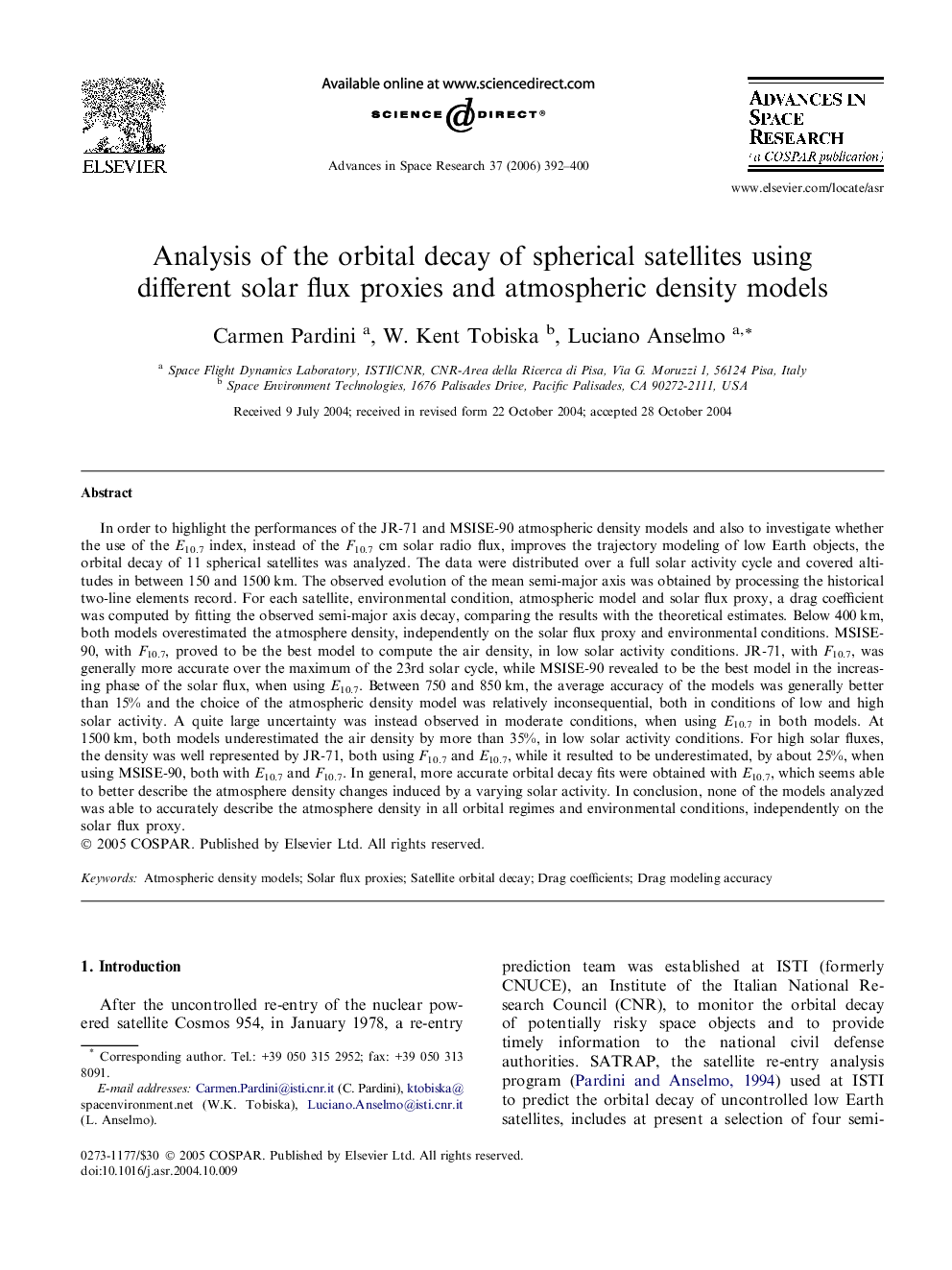| کد مقاله | کد نشریه | سال انتشار | مقاله انگلیسی | نسخه تمام متن |
|---|---|---|---|---|
| 1767425 | 1020190 | 2006 | 9 صفحه PDF | دانلود رایگان |

In order to highlight the performances of the JR-71 and MSISE-90 atmospheric density models and also to investigate whether the use of the E10.7 index, instead of the F10.7 cm solar radio flux, improves the trajectory modeling of low Earth objects, the orbital decay of 11 spherical satellites was analyzed. The data were distributed over a full solar activity cycle and covered altitudes in between 150 and 1500 km. The observed evolution of the mean semi-major axis was obtained by processing the historical two-line elements record. For each satellite, environmental condition, atmospheric model and solar flux proxy, a drag coefficient was computed by fitting the observed semi-major axis decay, comparing the results with the theoretical estimates. Below 400 km, both models overestimated the atmosphere density, independently on the solar flux proxy and environmental conditions. MSISE-90, with F10.7, proved to be the best model to compute the air density, in low solar activity conditions. JR-71, with F10.7, was generally more accurate over the maximum of the 23rd solar cycle, while MSISE-90 revealed to be the best model in the increasing phase of the solar flux, when using E10.7. Between 750 and 850 km, the average accuracy of the models was generally better than 15% and the choice of the atmospheric density model was relatively inconsequential, both in conditions of low and high solar activity. A quite large uncertainty was instead observed in moderate conditions, when using E10.7 in both models. At 1500 km, both models underestimated the air density by more than 35%, in low solar activity conditions. For high solar fluxes, the density was well represented by JR-71, both using F10.7 and E10.7, while it resulted to be underestimated, by about 25%, when using MSISE-90, both with E10.7 and F10.7. In general, more accurate orbital decay fits were obtained with E10.7, which seems able to better describe the atmosphere density changes induced by a varying solar activity. In conclusion, none of the models analyzed was able to accurately describe the atmosphere density in all orbital regimes and environmental conditions, independently on the solar flux proxy.
Journal: Advances in Space Research - Volume 37, Issue 2, 2006, Pages 392–400